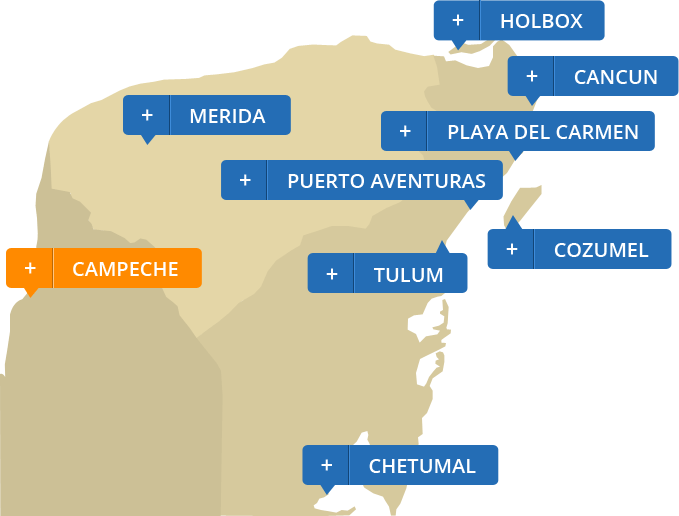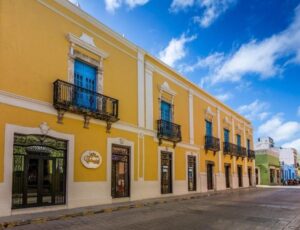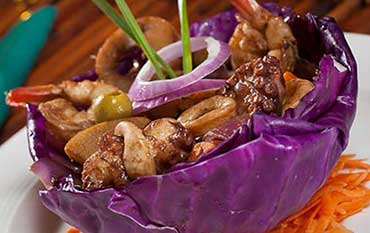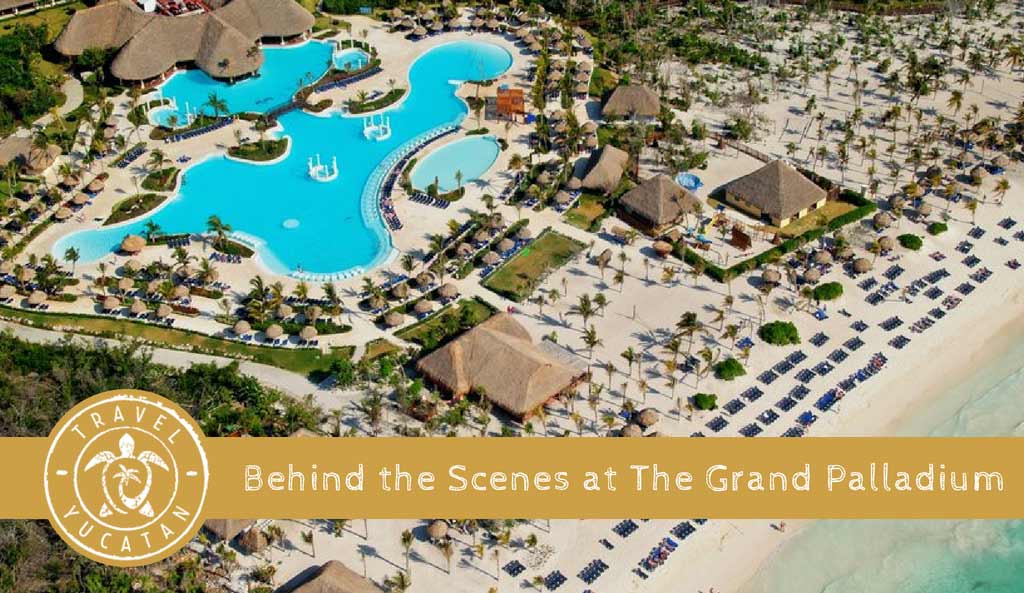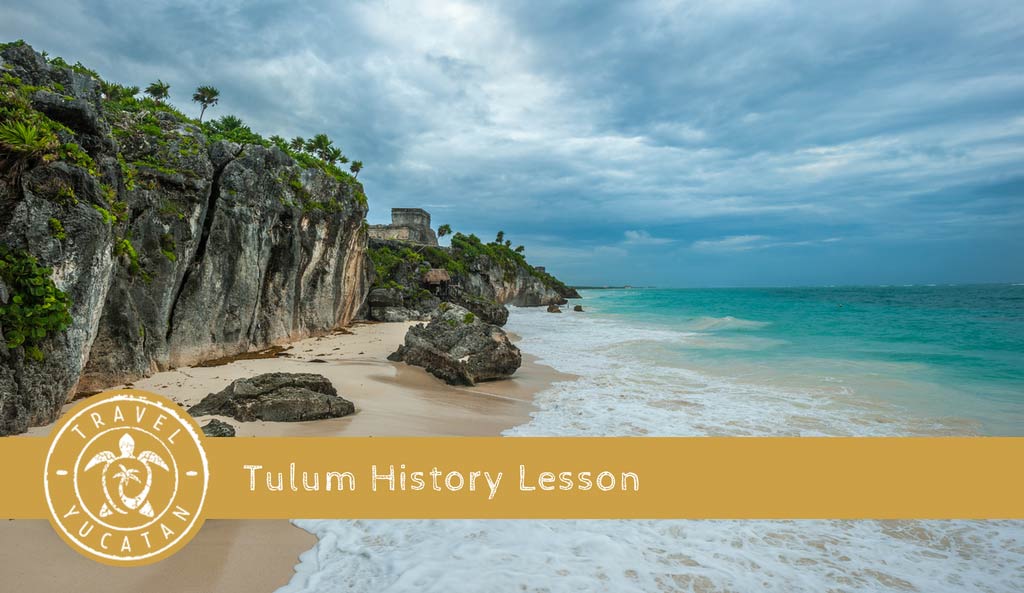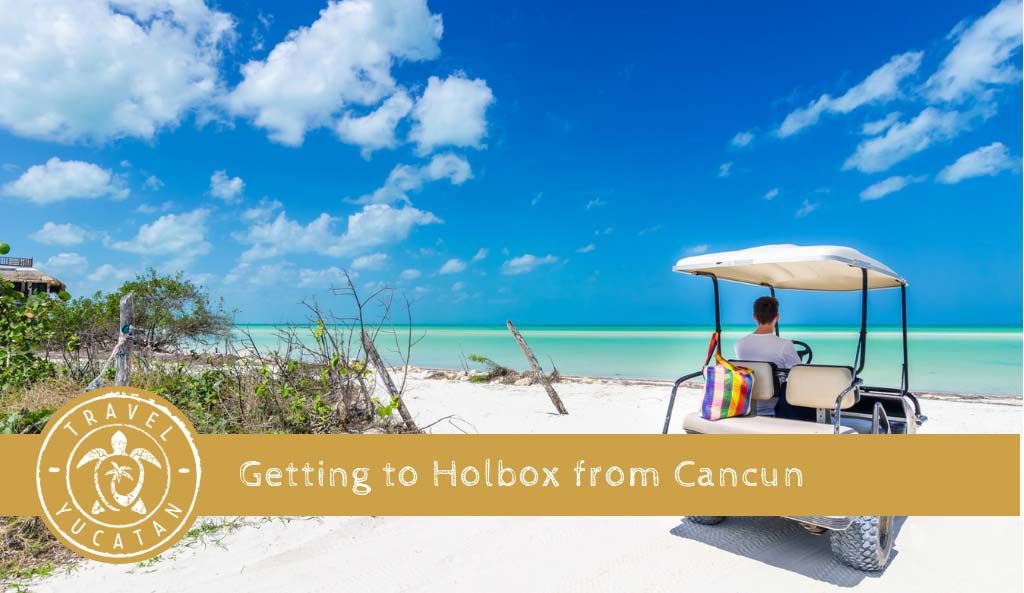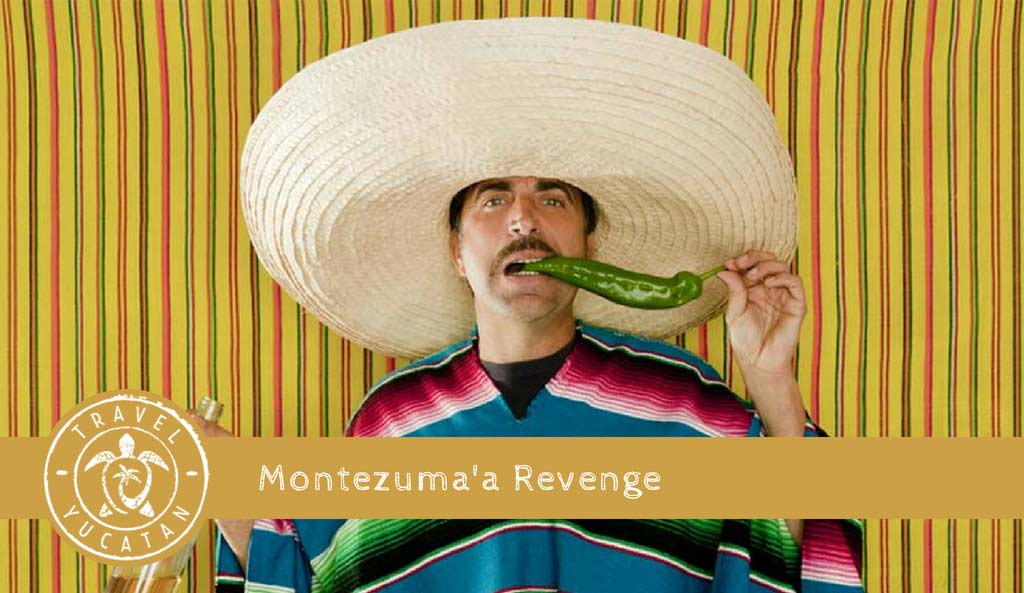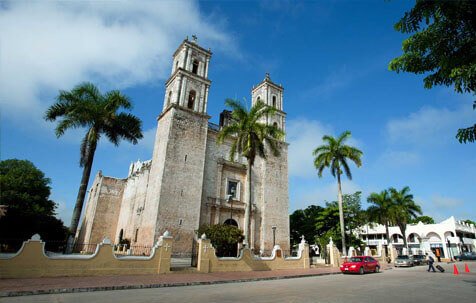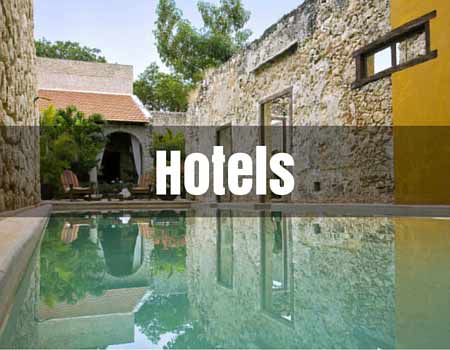
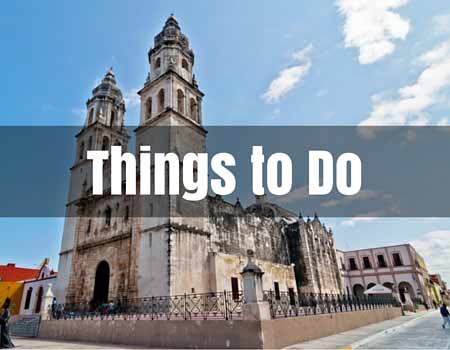

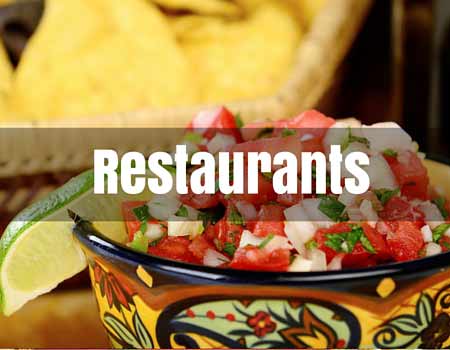
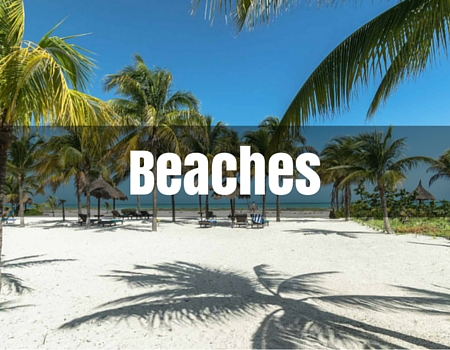
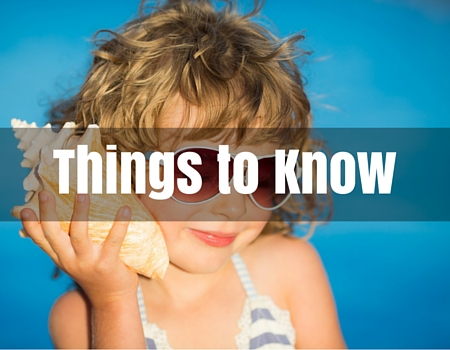
Campeche is located in the southeast of the Yucatan Peninsula and borders with the states of Yucatan, Quintana Roo and Tabasco as well as with Belize and Guatemala. Home to a number of Mayan archeological sites and the largest biosphere reserve in Mexico (Calakmul), Campeche is a great state in which to explore the natural and Mesoamerican world. The capital city, also named Campeche, is a colorful walled city painted in a rainbow of pastel hues and was given World Heritage status in 1999. Campeche City’s rich colonial history makes it an interesting place to learn about life in colonial Mexico.
Campeche was once an important port and trade center, surrounded by a fortress to guard against pirate attack. Much of the wall and the bastions still exist to this day.
CAMPECHE HOTEL INFORMATION
Campeche has a number of beautiful, colonial style hotels that reflect the history of the city. Ranging from boutique hotels with original flooring and antique furnishings to converted haciendas with modern design twists, the options for something unique are multiple in Campeche City.
For those who prefer the sounds of the jungle to the bustle of the city, a converted eighteenth century hacienda, called Hacienda Uayamon sits close to the archeological site of Edzna and makes the perfect place to spend a few nights.
THINGS TO DO IN CAMPECHE
Campeche is an interesting city with a wealth of places to explore and things to do. A walled fortress surrounds the historical center and many museums tell of Campeche’s rich history from Mesoamerican times through to the era of colonial trade and pirate attacks. A very laid-back city, Campeche is a great place just to simply wander. You can admire the colorful facades of the buildings, explore the boutiques and chocolate shops, take a look into the churches or relax with the locals in the main square. It is also nice to take a stroll along the Malecón (seafront), enjoying the sea breeze and imagining what the city was like when it was a bustling and important port.
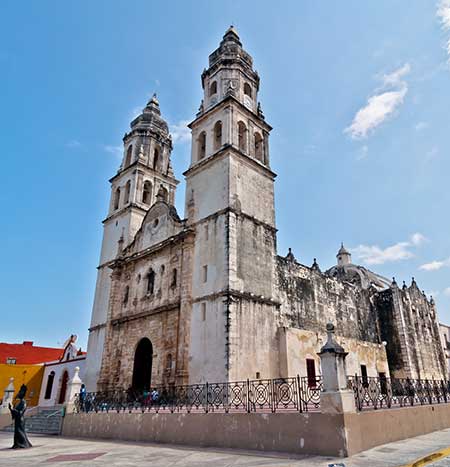
GETTING TO CAMPECHE
While not always first on the list for travelers exploring the Yucatan, Campeche is surprisingly easy to get to. There is an airport with direct flights from Mexico City and buses arrive from, and leave for, Cancun (7 hours), Merida (2.5 hours) and Playa del Carmen (8.5 hours) among others, a few times a day. Campeche is also well served by a modern highway making it a comfortable drive from nearby Merida as well as from Cancun and Playa del Carmen.
Campeche is a very small city, built on a grid system, so it is very easy and pleasurable to navigate on foot. Do keep in mind that Campeche can be very hot however, so it is worth taking breaks and keeping hydrated. Streets in Campeche are numbered. Streets running north to south have even numbers, streets running east to west have odd numbers and street numbers ascend towards the south and east.
To explore outside the historical city, the city taxis are the best option, with set prices by zones. There is also a bus system for the more adventurous but the buses are small and can get very hot and cramped.
If you plan to visit the archeological site of Edzna, located about 40 minutes outside of town, the easiest option is to take a taxi (arrange the price before setting off). The site can also be reached using the colectivos (shared taxis) that leave from just outside the market. Be sure to double check with your driver that you are headed to the right destination.
CAMPECHE RESTAURANTS
Campeche’s gastronomy, like the food in much of the rest of the peninsula, is influenced by traditional Maya cuisine combined with European flavors. Fish and seafood feature heavily in the local cuisine, along with exotic fruits and herbs, which add color and spice.
Restaurants in the city range from small hole-in-the-wall eateries to more elegant dining options. Most restaurants offer local dishes such as Pan de Cazon (tortillas stacked with refried beans and dogfish), sweet green papaya, papdzules (tacos filled with boiled eggs and covered in a pumpkin seed sauce), various octopus dishes and coconut shrimps all of which go well accompanied by a traditional drink called a campechana (rum and coke with mineral water and lime).
Trancas are a local snack of French bread filled with roast pork or turkey. Tranquerias selling these tasty treats are found all around the city and are open until about 4pm.
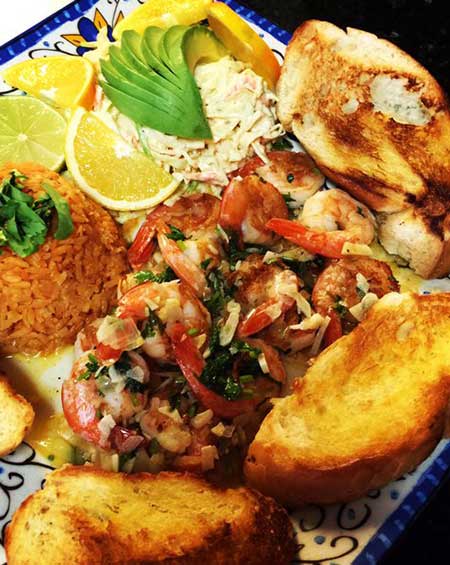
CAMPECHE BEACHES
Campeche’s beaches are often forgotten due to the popularity of beaches in the more northern parts of the Yucatan Peninsula, however the quiet, virgin beaches are certainly worth visiting if you have time.
If you decide to explore the beaches take the coastal road between the city and Ciudad del Carmen, along which many quiet beaches can be found. Some beaches are nicer than others so just keep going until you come you want to stop at.
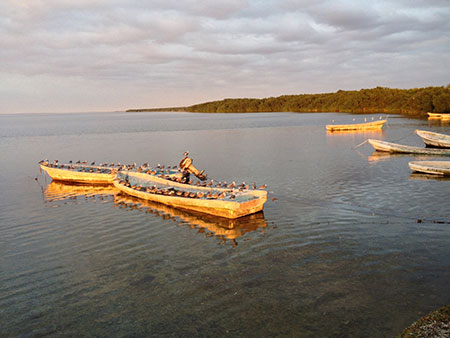
CAMPECHE NIGHTLIFE
Campeche is a relatively quiet and laidback city but there is usually something going on after night falls. After dark the buildings in the historic center are lit up and a light and sound show at the Puerta de la Tierra tells the story of Campeche’s history every Thursday through Sunday at 8pm.
There are a number of bars and restaurants on Calle 59, which runs through the center of the city and by night there is often live music and lots of people enjoying the cool night breeze. Head here for dinner and a few al fresco drinks after sunset.
For those who really want to dance, Lafitte’s Boulevard Café at the Hotel del Mar has a disco from midnight to 3am most days of the week.
THINGS TO KNOW ABOUT CAMPECHE
Historically Campeche was made up of three zones:
The Center: The area within the wall that surrounded the city, which was inhabited by the Spaniards.
San Francisco: Located to the north of the wall, where the Mayan population was concentrated.
San Roman: Located to the south of the wall, where the Mexican natives established themselves with people from the Caribbean Islands such as Cuba.
While these zones still exist, the population of Campeche is no longer divided in this way and all zones make up the city.
The buildings in Campeche’s historical center are painted in a variety of pastel colors, but it is worth noting that the buildings are repainted every four years so the municipal building might be yellow one visit and pink the next.
While the beaches adjacent to the city are not great for swimming and relaxing, some pretty beaches can be found just a few kilometers away.
You can find tourist information at the Cultural Center House #6, which is on Calle 57 between 10 and 8 or at the State Tourist Office located on Av. Ruiz Cortines on Plaza Moch Couoh in the historical center.
Campeche and has two kinds of climate: the humid warm and the sub-humid warm. The sub-humid warm climate has periods of rain in the summer and beginning of fall over most of territory. In the dry season it is characterized by the convergence of warm winds from the east and the southwest. The humid warm climate is prevalent in the southwest part of the state by the Tabasco border.
Check out Campeche Weather Review [For each month of the year].
For vacationers, many of your questions could probably be answered if you read these pages:
Mexican Embassies
Legalization Documents
Travel Complaints
Yucatan FAQ
Mexico Travel Tips
Losing Money
Emergency Departure
Medical Services
Emergency Phone Numbers
HISTORY OF CAMPECHE
Campeche’s history dates back to the third century when it was the principal town of the Mayan district Ah Kin Pech. In 1517 the Spanish led by Francisco de Montejo attempted to invade the town but were defeated by Mayan warriors led by Moch Couoh. Further invasion attempts were unsuccessful in 1527 and 1537, however in 1540 Montejo’s son and his men returned better equipped and massacred their way into the Mayan homeland.
Precious metals, slaves and a dye found in logwood became chief commodities that were exported out by the Spanish at high prices. The dye in particular was highly prized in Europe and when news spread about its availability in Campeche the city came under constant pirate attack for the next century. Finally after almost 100 years of attacks, the King of Spain was forced to act, ordering the construction of a thick wall around the city. Construction took 20 years and Campeche became a fortress city.
As attacks began to wane and inhabitants began to bemoan the fact that the wall served to create a breading ground for disease in the hot and humid city, parts of the walls were dismantled. However, to this day the fortress bastions are still intact along with short sections of the wall.
Ah Kin Pech is believed to mean the ‘place of the serpents and ticks’
